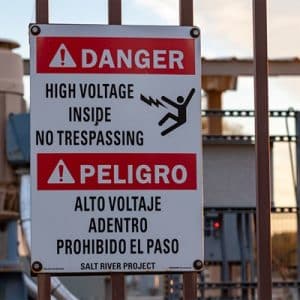Aortic Dissections From Car Accidents
Seat belts and airbags save lives. However, these same life-saving devices can sometimes turn life-threatening, causing organ damage and death from severe conditions like aortic dissections from car accidents. If aortic dissection from a vehicle accident caused damage, suffering, or death of a loved one, consider contacting Stabinski Law at (305) 643-3100 to schedule a consultation with our knowledgeable personal injury attorney who can advise you on potential compensation.
What Is Aortic Dissection?
As described by the Cleveland Clinic, aortic dissection is the tearing of the weakest part of the aorta. The aorta is the main artery of the heart and is located in the chest and part of the abdomen. Aortic tissue is made up of three layers:
- Intima (inner)
- Media (middle)
- Adventitia (outer)
The intima tissue is the most delicate, and when it tears, bleeding immediately begins at the tear. When that happens, blood flow separates the inner layer from the media tissue layer, and the aorta can no longer distribute blood and nutrients properly to the body. Sufferers of aortic dissection require immediate medical attention. Even though an accident victim may believe he or she is fine after a car accident because no severe symptoms are present, the victim may be in shock or may develop symptoms later. Additionally, sudden death can occur in a patient with an aortic dissection.
Aortic Dissection from Seat Belts and Airbags
According to the Mayo Clinic, aortic dissection can be caused by a developed medical condition; however, this is not common and typically afflicts men 60 and older. Aortic dissections occur more commonly as a result of motor vehicle accidents and can affect children and adults of any age. The condition is caused by blunt force trauma from seat belts and airbags as they place immense “direct compression on the aorta,” according to the National Center of Biotechnology Information.
In an accident, the rib cage that normally protects the lungs and heart from internal damage becomes crushed by the violent restraint force of the seat belt and airbags that keep us inside the automobile. Without the protection that the rib cage usually offers, internal organs can become damaged by those restraints that were designed to save our lives because the force is so strong. The pressure on the chest, ribs, and abdomen goes right to the internal organs and can cause extensive damage that can be severe and even fatal.
Is Aortic Dissection Life Threatening?
Aortic dissection can cause death. The fatality risk often depends on the location of the damage done in the aorta. If the damage occurred in the part of the aorta that turns upward toward the head, surgery to repair the tearing would be required as soon as possible, or the patient may die. Aortic dissection located elsewhere still poses a risk to the victim of the car accident, especially if that victim has underlying health conditions. Children who are victims of aortic dissection caused by a vehicular accident are likely to be especially deprived of the oxygen and nutrients lost by bleeding and often require a blood transfusion.
Anyone who suffers from the condition will need time for the blood vessels to heal. Adults who survive may face a lengthy recovery period with limited activity except for permitted exercises. Consider contacting the car accident and wrongful death attorneys at Stabinski Law if you or a family member suffered the pain and trauma and losses associated with aortic dissection.
Signs and Symptoms of Aortic Dissection
Victims of aortic dissections from car accidents may not notice crucial symptoms right after the accident possibly due to shock. Therefore, when there has been impact from a seat belt or airbag during an automobile accident, it is important to seek emergency medical help.
Death related to aortic dissection might occur without immediate surgery, depending on the part of the aorta that was torn by the blunt force trauma. Although symptoms may not be apparent right away, the following are the most common signs and symptoms of aortic dissection:
- Sudden sharp or stabbing chest or upper back pain (this may feel like something is being torn away inside the body)
- Dizziness and possibly fainting
- Shortness of breath
- Weak pulse
- Low blood pressure
- Weak vision
- Sweating and confusion
- Stroke symptoms, such as paralysis on one side of the body and problems speaking
What Is the Course of Treatment for Aortic Dissection?
The treatment course for aortic dissection will depend on where the tear is in the aorta, whether surgery is needed, the patient’s medical history, and any other injuries the patient may have sustained in the accident. The total treatment plan includes the time spent in the hospital and the time spent recuperating over the next weeks or months.
In the Hospital—Surgery and Medication
If immediate surgery is not required, medication to lower blood pressure might be given to allow the aorta to heal. Some patients require both. Beta blockers or other blood pressure drugs help to relax the aorta and reduce the risk of further tearing. The medication may also help to treat the pain caused by the aortic dissection, although pain medications are usually given.
If surgery is required to mend the tears in the aorta, either open-heart surgery or endovascular surgery will be performed, depending on where the aortic damage is located and the calculated risk to the patient. According to the Texas Heart Institute, the after-surgery outcome is the most positive for people under age 70 who did not suffer kidney failure, stroke, or coma during the surgery.
After the Hospital—General Recovery
After a successful surgery and other treatment, and depending on individual cases, doctors may recommend a month or two of reduced physical activity and sports to prevent any danger of re-injuring the aorta. Light exercise is usually advised, as is eating a healthy diet. Blood pressure medication may continue to be required and will be reevaluated at follow-up appointments.
Schedule a Free Visit with a Car Accident Attorney Today
The compassionate team of experienced personal injury lawyers at Stabinski Law advocate for victims of aortic dissections from car accidents and fight for compensation for medical bills, suffering, lost wages, wrongful death of a family member, and more. If you or a family member experienced aortic dissection after a motor vehicle collision, consider calling (305) 643-3100 to schedule a free consultation to learn more about your legal rights.












